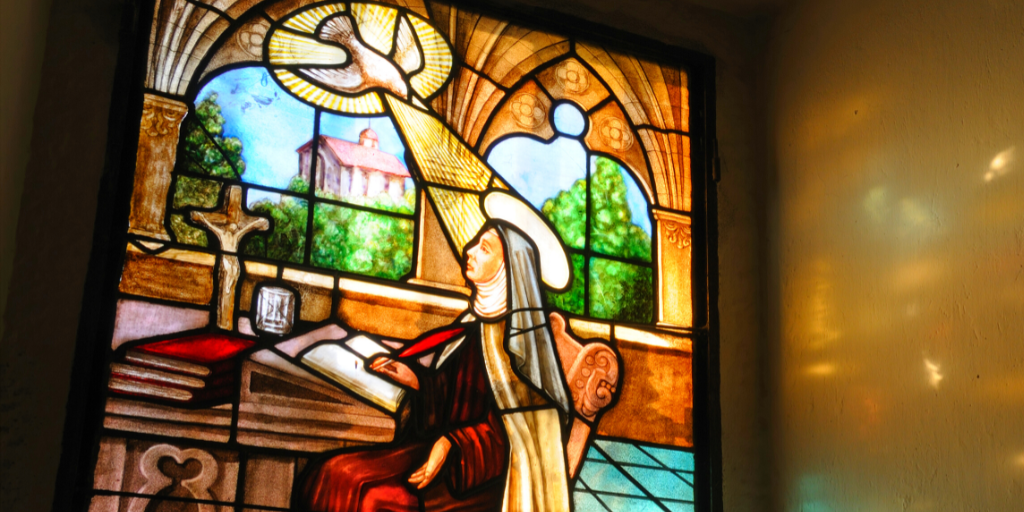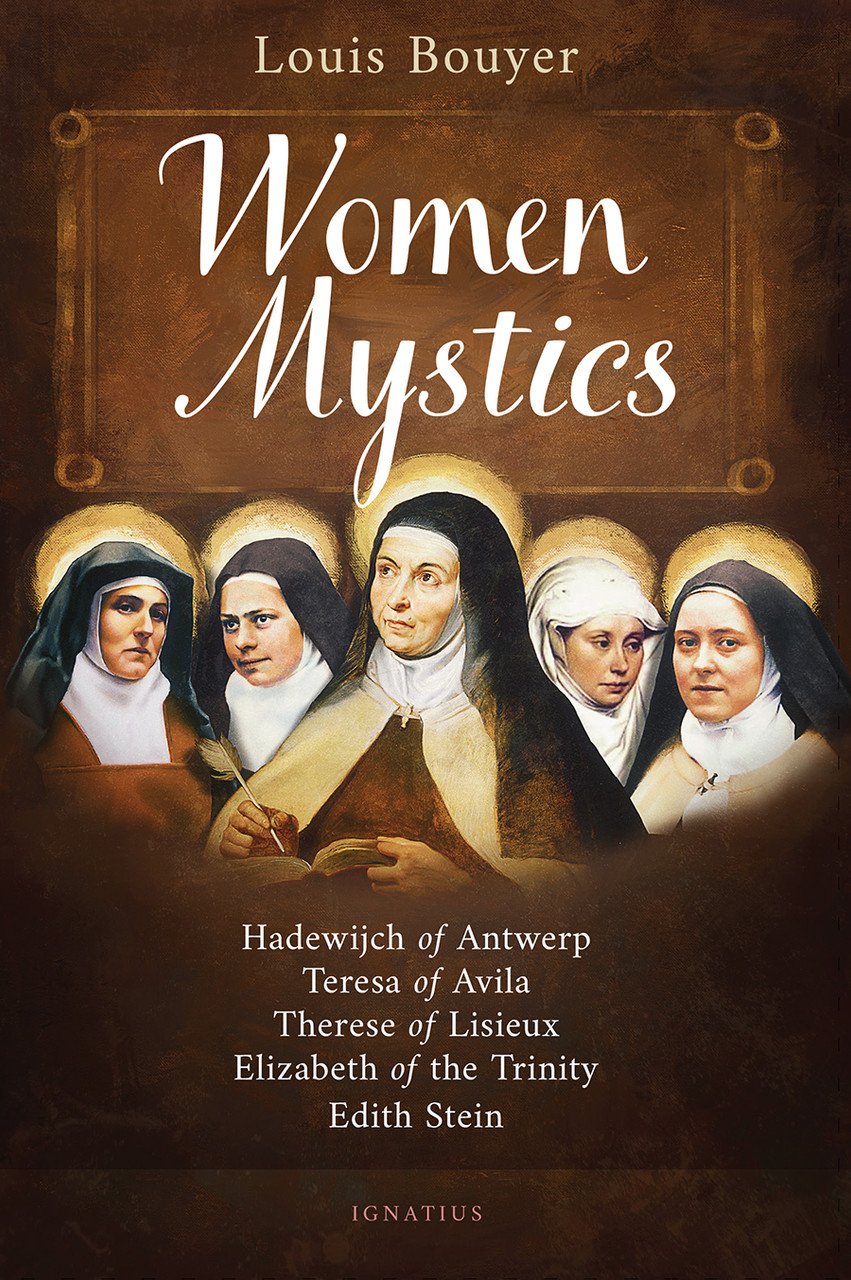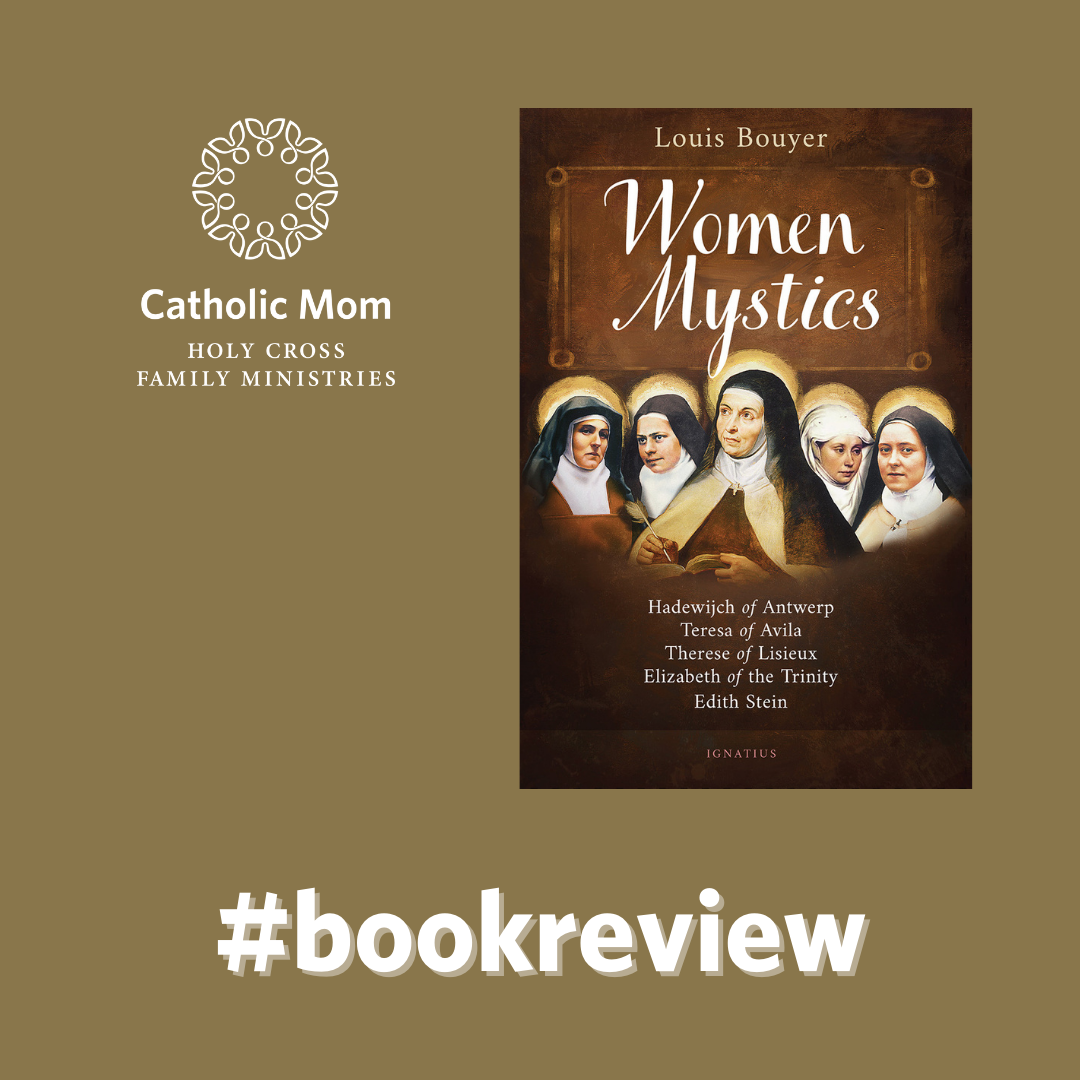
Jane Korvemaker reviews Women Mystics by Fr. Louis Boyer, new from Ignatius Press.
Women Mystics by Fr. Louis Boyer delves into the lives, spirituality, and theology of five women, starting in the late medieval period. Fr. Boyer has found in these particular five a revolution instigated by women for the Church’s renewal. Here he highlights how the thoughts and actions of women are essential to the Church and that the examples of these five refute the idea that sentimentality is the contribution of women in the Church.

Fr. Boyer sets out this journey chronologically, starting with Hadewijch of Antwerp. He then addresses Teresa of Avila, Thérèse of Lisieux, Elizabeth of the Trinity, and Edith Stein (Teresa Benedicta of the Cross). Of these five women, the latter four are from the Carmelite tradition.
This book, as is common in theological works, does not give much introduction in the way of philosophical and theological concepts discussed. I particularly felt aware of this at the beginning of the book when he writes on his first interlocutor. In his introduction, Fr. Boyer suggests starting with chapter three, which skips over Hadewijch of Antwerp and dives into Teresa of Avila. For most general readers, I would also make this recommendation.
Starting with chapter three makes an easier read since Teresa of Avila is a more common figure to whom readers are familiar and her work is better known in a general way. It becomes a better introduction into Fr. Boyer’s style of writing without being inundated with newer concepts not clearly explained at first. As the reader continues, the concepts are easier to understand and their interconnections with each person becomes as golden threads to them all. From Edith Stein it would not then be difficult to go back to Hadewijch.
Encountering the Women
The common themes encountered among these esteemed women are no less than that which Christ called for and embodied himself: a revolution of emptying oneself to the radical love of God. In doing this, we experience being lifted up into God: our deification. Each woman contributes her own mystical experience of how this may happen.
Hadewijch demonstrates this through identifying oneself in the immense love of the Trinity which can only be known through Jesus. Identifying with Christ’s love recognises that we are called to incarnate Christ in each of our own lives, “to conceive and give rebirth to Christ from her own humanity” (42).
Teresa of Avila, in her development and reflection on her spiritual life, gives us The Interior Castle, a mature reflection on the movement of the contemplative soul to God. It narrates moving through seven successive apartments of a castle, analogous to the soul’s movement to God. There are two main stages: that of conscious prayer (active intention) to that of unconscious prayer (inactive intention), a type of passivity or surrender that allows one to be captivated by God and drawn up and into the love of God.
In Thérèse of Lisieux, Fr. Boyer finds three important spiritual motifs: love, the little way, and darkness of faith. The first is that of encountering and surrendering oneself to Love. In this act of surrender, one is given “unflinching faith” (143), which Thérèse demonstrates through her little way: offering up her sufferings to God. She encounters the climax of this suffering in her own darkness of faith toward the end of her life. Through this experience, she discovers that to encounter that desolation of the Cross ourselves “is really to participate in the redemption by participating in the love that is the soul of it, in its integrity” (145).
Two themes dominate Elizabeth of the Trinity’s writing and life: the praise of God’s glory and her strong and very explicitly trinitarian orientation. She felt it was her vocation to be an embodiment of the glory of God in her life and this was shown through her serenity and joy that overcame and was victorious over her suffering. Her spirituality models acceptance of all that life presents to us as a participation in the love of the Cross through a continual offering of thanksgiving.
Edith Stein’s theology and spirituality profoundly emphasised the connection between the cross and each person’s participation in that act of self-emptying compassion and love: the complete gift of self to the One who gives completely. This is Love. She recognised the intricate relationship between intimacy and abandonment, between the cross and self-emptying love, and how the experience of these witnesses to living out God’s eternal life here on earth.
Women Mystics is a very good introduction to the foundational work these women have done for the renewal of the Church. Without women freely giving themselves over to God to be used in such ways for spiritual renewal and revolutionary movement, our Church would be very impoverished indeed. It is a good reminder to what we are all called to do.
Ask for Women Mystics at your local Catholic bookseller, or order online from Amazon.com or the publisher, Ignatius.com.

Copyright 2023 Jane Korvemaker
Images: Canva
About the Author

Jane Korvemaker
Jane Korvemaker loves food, family, wine, and God (perhaps not in that order). She holds a Certificate in Culinary Arts, which pairs perfectly with her Bachelor in Theology. A former Coordinator of Youth Ministry, she writes from the beautiful and cold province of Saskatchewan, Canada. She works from home and takes care of her three very hard-working children. Jane regularly blogs at AJK2.ca.


.png?width=1806&height=731&name=CatholicMom_hcfm_logo1_pos_871c_2728c%20(002).png)
Comments